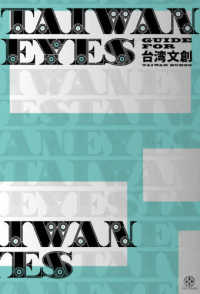Full Description
Transformation of public education requires the reawakening of the sleeping giant in the room: the learners. Students, teachers, and principals develop a system of personalized mastery that challenges the current system. Re-Awakening the Learner, Second Edition guides to just such a learning environment. Continua and tools describe and assist in the journey of teachers, teacher leaders, and principals in partnering with learners.
Stakeholders identify a common moral purpose, create a culture of continuous improvement and commit to infusion of students in the learning in a learner improvement cycle. Common moral purpose is driven by beliefs and behaviors that support all learners to proficiency. These beliefs/behaviors include creating a school's culture to be ready-to- change, trust one another to doubt current practices, and develop collective efficacy. This new culture supports the components of the learner improvement cycle (assessment, evaluation, planning, and learning) involving the learners in each step.
Updates include tools and processes to assist the readers in implementation. Directions, templates, and examples assist in realizing the future of public education. Public schools must awaken to a new reality.
Additional key features of this updated edition include:
Explore a new model that empowers learners in their educationEvolve through a developmental continua to becoming a personalized mastery systemDetermine the new skill and knowledge set needed to involve learnersUtilize tools and processes that will partner with learnersEnsure partnerships with learners through involvement in a new Learner Improvement CycleDiscover a methodology for inclusion of all stakeholdersHear the voices of stakeholders going through the processDiagnose school improvement through a gap analysis at the reader's site
Contents
CONTENTS
Foreword by Robert J. Marzano, PhD
Acknowledgments
Part I: Public Education: Yesterday's Answers to Twenty-First-Century Needs
Chapter 1: The Problem: Schools Are Not Structured to Prepare Learners for the Twenty-First Century Chapter 2: Creating the Schools Our Kids Deserve!
Part II: The Culture of Continuous Improvement
Chapter 3: Developing Moral Purpose
Chapter 4: Creating the Culture of Readiness for Change
Chapter 5: Creating the Culture of Trust-to-Doubt
Chapter 6: Creating a Culture of Learner-Centric, Collective Efficacy
Part III: The Personalized Mastery Cycle
Chapter 7: Assessing
Chapter 8: Evaluating
Chapter 9: Planning
Chapter 10: Learning
Part IV: Wide Awake in the Twenty-First Century: Proficiency for All
Chapter 11: Moving from Sleepwalking to Reawakening the Learner
Part V: A Toolkit to Reawaken Your Learners
Chapter 12: Introduction
Chapter 13: A Toolkit for Personalized Mastery
Progression from Teacher-directed to Learner-centered Systems
Developing Common Moral Purpose Tools
Note-catcher for Common Moral Purpose
Shared Vision
Code of Collaboration
Parking Lot (Plus/Delta)
Affinity Diagram
Priority Voting
Tools to Create a Culture of Continuous Improvement
Note-catcher for Developing a Culture for Continuous Improvement
Standard Operating Procedures
Gallery Walk
Classroom PDCA and Goal setting
Celebrations and Hurdles
Data Walls
Commit-o-gram
5 Whys
Increasing Student-to Student Talk
Clock Appointments
Think Pair Share
Using Experts
Celebrating the learning culture
Developing the Personalized Mastery Cycle: Assessing, Evaluating, Planning, and Learning
Personalized Mastery Cycle Chart
Note-catcher for Personalized Mastery Cycle
Assessing and Evaluating
Personal Learning Profile
Data-driven Dialogue
Using Rubrics
Using Exemplars
Planning and Learning
SMARTER Goal
Individual PLCA
Proficiency Ladders
Choice Boards
Bar charts
Intro to Reader's SMARTER Goals
Common Moral Purpose SMARTER goal and PDCA
Culture of Continuous Improvement SMARTER goal and PDCA
Learner Improvement Cycle SMARTER goal and PDCA
Learner Improvement Cycle SMARTER goal and PDCA
References
About the Authors







